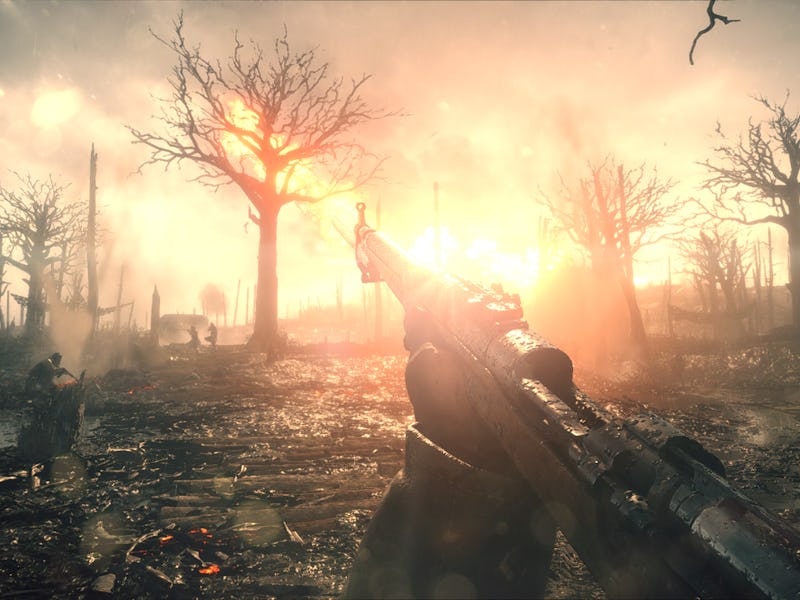How Weapon Customization Works in 'Battlefield 1'
Preset classes are back in business.

A great many things have been changed in Battlefield 1’s multiplayer, some for the better and some for the worse. Among those new changes is weapon customization, which has always been a key component of the franchise. But this time, open customization has been scrapped in favor of a new model.
Previously, weapon customization has been tied to each individual weapon — allowing you to put a series of different attachments on nearly everything in the game. These included scopes and sights from various nations, silencers and flash hiders for your barrels, and even an entire wardrobe of camouflage patterns from all over the world.
In Battlefield 1, weapons are sorted by class, just as you’d expect. Assault has access to submachine guns and shotguns, Medic has access to DMRs, Support has access to light machine guns, and Scout has access to bolt-action rifles. Unlike in previous titles, however, these weapons are completely locked behind class restrictions — which means you won’t be able to unlock weapons like carbines, marksman rifles, or shotguns to use on any class other than the initial one.
Each of the classes have access to a handful of weapons, along with a special weapon once you’ve reached rank 10 with that specific class. Instead of being able to pick what attachments you’d like on your weapon, you’ll be choosing from one of a few different presets designed to fit your play style. These alter the weapon’s attributes passively, giving you access to various sights or extended magazines as well. A few basic modifications can still be made too, such as adjusting the recoil pattern of your weapon or magnification of your sight.
Look at the Mondragón, for example. This weapon comes with three presets: Storm, Optical, and Sniper. The Storm variant is equipped with iron sights and a lower accuracy rating, but better control for use in close-quarters combat. The Optical variant is equipped with a basic sight and has a higher accuracy rating, but less control for use at medium range. Meanwhile, the Sniper variant is equipped with a scope, providing greater accuracy while losing viability up close.
The idea here is to provide each class with a set of options for players to take advantage of, while also allowing DICE to fine tune each weapon for balance between the classes. Nearly every weapon present in Battlefield 1 follows the Mondragón’s example, providing presets for players who prefer different types of combat. This allows Scout players to use bolt-action rifles without scopes if they prefer shooting at shorter ranges, or Assault players to engage enemies at a distance with shotguns designed to provide a little more range.
The new system doesn’t just take visual customization and throw it out of the window, though. In Battlefield 1, Battlepacks have been retooled to award you with unique weapon skins that are specific to one weapon in a way like Counter-Strike. They don’t alter your weapon’s stats, but they do grant a fantastic skin that you can brag about on the battlefield.
While it may seem a little limiting on the surface, the new preset configurations work quite well. They bring back a sense of balance among Battlefield 1’s entire arsenal that many other shooters have thrown out the window, reintroducing the old way of looking at load-outs back into the modern generation of games.